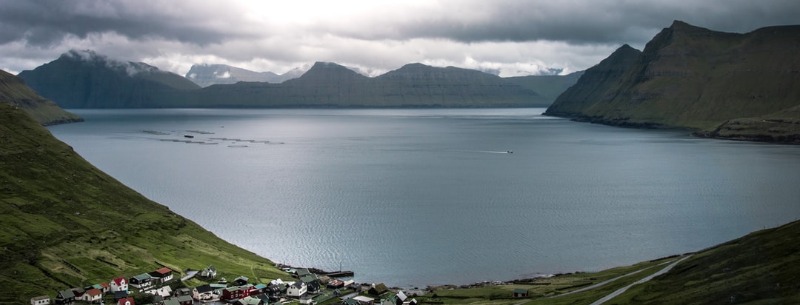Tórshavn, capital city of the Faroe Islands
Tórshavn’s story began centuries ago, when the Faroe Islands were first discovered by Vikings from Western Norway. Their small settlement quickly grew into a bustling market center, then blossomed into a thriving town. Today, Tórshavn is one of the world’s smallest capital cities, but it is also one of the most delightful.
The well-preserved and lively old town center rewards visitors with a confusion of narrow passages and lanes whose black-tarred houses are marked by emerald-turfed roofs and bright white windows. The area feels like a set for a historic movie, but it is actually a genuine town that remains close to its original Middle Ages design. Nearly all other timber-built Nordic towns in the world were destroyed by fires over the centuries, but Tórshavn’s escaped that fate and never fell prey to such a disaster. Still alive with the buzz of daily life, the area is one of the most unique places in not just the Faroe Islands, but the whole world.
Rich stories and history dwell in the old town. The celebrated storyteller William Heinesen was born there in 1900, and visitors can still sit in the attic of his father’s shop. Heinesen often looked down over the town from that perch, and the view remains strikingly unchanged. Green turf still tops the houses, hens continue to run amok in the streets, women gossip from window to window, and the sound of church bells still fills the air each hour. It was from the attic that the writer dreamed up the elf girl Tarira, a statue of whom stands in the center of the town’s park today.
The cultural history of the islands comes alive at the Faroese Museum of History. The interesting exhibits contain artifacts from the Viking Age through the Middle Ages, telling the story of maritime and farming life in the Faroe Islands.
The Museum of Natural History focuses on the islands’ animal life and geology, and a comprehensive collection of vivid local works of art are on display at the National Gallery of Art.
Tórshavn is located in the southern half of Streymoy Island, but the northern half is also worth exploring. A Viking farmstead is well-preserved in the village of Kvívík, nearby Leynar is one of the most scenic places in all the Faroes, and the Vestmanna cliffs offer magnificent, awe-inspiring vistas. Seabirds glide above the towering cliffs, and you can wonder at the rich colors and textures created by nature as you sail among the rugged sea stacks and discover the many grottoes that line the coast.
The wide and long valley of Saksun is a paradise for cyclists, and the narrow road there follows a shallow river characterized by miniature rapids and abundant bird life. The Faroese national bird, the tjaldur, can often be seen soaring across the sky. The large black and white birds are easy to spot because of their distinctive crimson colored bills.
